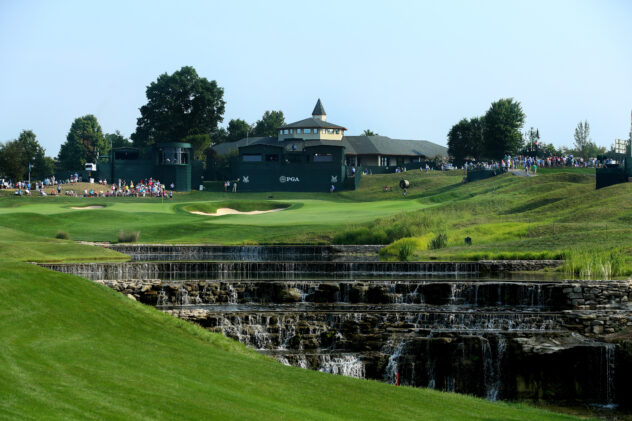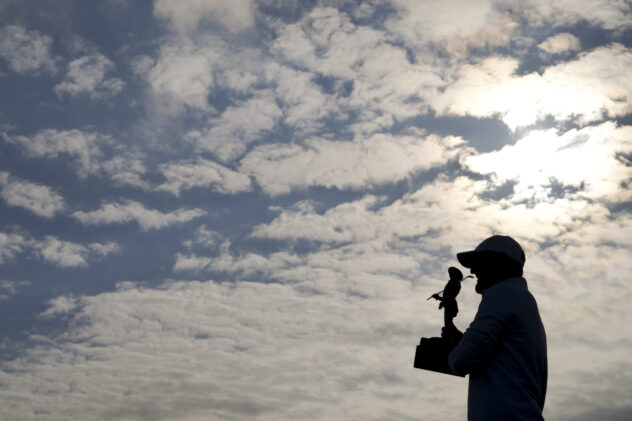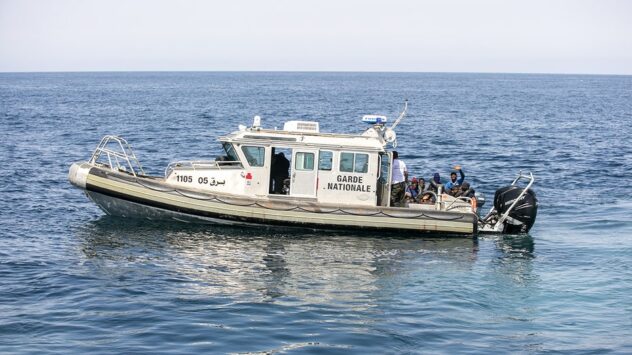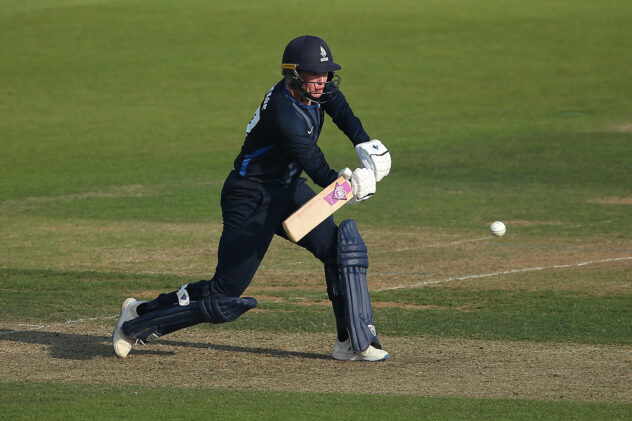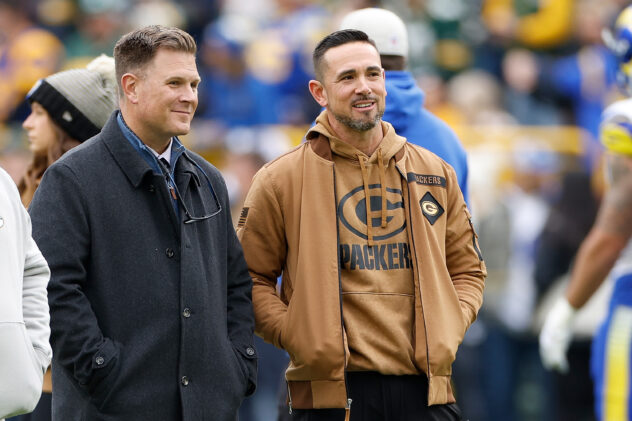Where to play golf in Wisconsin: Variety galore at Whistling Straits, Sand Valley, Lawsonia Links and Erin Hills
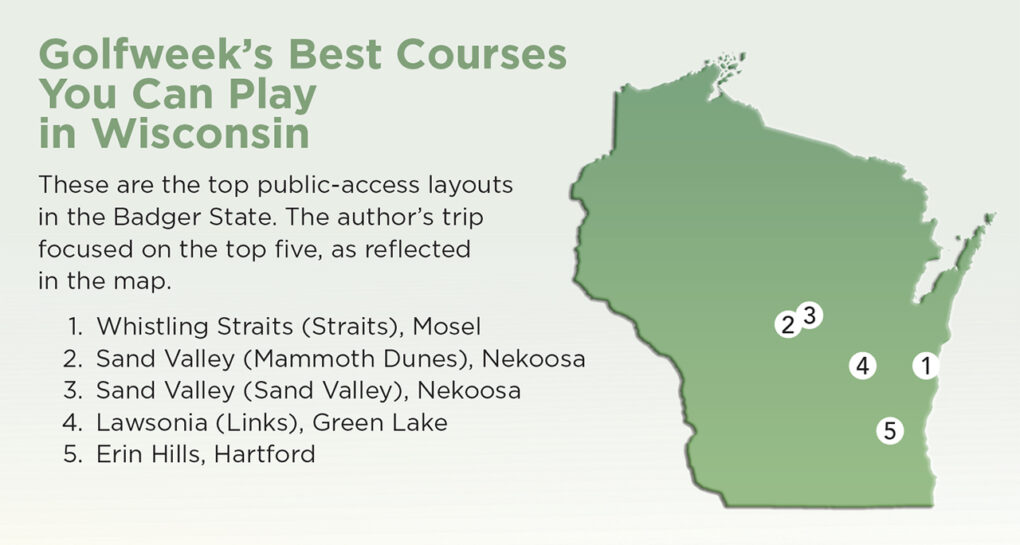
Sure, Wisconsin is known for cheese, beer and its often-frigid climate on the shores of Lake Michigan. But golf? That far north, where it snows that much?
To the far-flung uninitiated, it would seem to be a stretch. But to the well-traveled golfer, that’s a solid yes that carries all the importance of a Packers playoff berth. Over the past quarter century, the Badger State has become one of the top destinations in the world for elite golf, sporting a slew of layouts that have climbed high into Golfweek’s Best rankings of courses in the U.S.
And yes, the golf world’s attention will be focused on Wisconsin when the Ryder Cup is played in September at Whistling Straits, a famed Pete Dye layout that is part of Destination Kohler on the shores of Lake Michigan. International TV broadcasts and top-tier professionals will make sure of that. The Straits course is the No. 1 public-access layout in the state, as judged by Golfweek’s Best national roster of course raters, and it’s deserving of that spotlight.
But there’s simply so much more to Destination Kohler and Wisconsin as a whole, the spotlight shouldn’t be switched off when the Ryder Cup wraps up in September.
How strong can Wisconsin’s golf be versus powerhouses such as California, Arizona, Florida and the like? Consider that when comparing the Golfweek’s Best course ratings of the top five public-access courses in each state, Oregon is No. 1 in the country on the strength of famed Bandon Dunes Golf Resort and its five 18-hole layouts. Wisconsin is No. 2 on that list, and it’s not reliant on one resort. Instead, there are five courses at three resorts and one daily-fee facility that push Wisconsin ahead of all those warm-weather states when comparing just the top five courses.
 On Golfweek’s Best ratings scale of 1 to 10, each of the top five in Wisconsin scores higher than 7, the only state aside from Oregon to do so. Sure, No. 3 California has historic Pebble Beach and the like, but it doesn’t beat out Wisconsin’s five-deep roster of Erin Hills, Lawsonia Links, two courses at Sand Valley and, topping the list, Whistling Straits’ Straits course. For consideration, Erin Hills ranks No. 5 among the state’s public-access tracks, and it hosted a recent U.S. Open.
On Golfweek’s Best ratings scale of 1 to 10, each of the top five in Wisconsin scores higher than 7, the only state aside from Oregon to do so. Sure, No. 3 California has historic Pebble Beach and the like, but it doesn’t beat out Wisconsin’s five-deep roster of Erin Hills, Lawsonia Links, two courses at Sand Valley and, topping the list, Whistling Straits’ Straits course. For consideration, Erin Hills ranks No. 5 among the state’s public-access tracks, and it hosted a recent U.S. Open.
It’s little wonder I wanted for years to play all five of Wisconsin’s top public-access courses – in order from No. 5 to No. 1 – in one mad dash around the state, even if I had to explain to a curious fellow passenger, who had seen my golf travel bag before the flight to Milwaukee, why I was leaving my home state of Florida to find greener pastures up north.

Sand Valley in Wisconsin (Courtesy of Sand Valley/Brandon Carter)
“We call it being Wisconsin friendly,” said Rich Tock, the current ambassador and former director of golf at Erin Hills and a member of the Wisconsin Golf Hall of Fame. “We’re here to make it easy for people.”
Mike O’Reilly, the golf operations manager at Whistling Straits, said that if he took a group of players to Scotland, they likely would stay seven or eight days, play eight to 10 courses and move around a fair bit. The same can be done in Wisconsin.
“In the last 15 years with the addition of Erin Hills, with the addition of Sand Valley, with the resurgence of some other places like Lawsonia and SentryWorld and several others, we’ve become really a global destination where people can visit the state of Wisconsin and play seven, eight, nine, 10 highly ranked golf courses over a seven-, eight-, nine-day period,” said O’Reilly, who started his career as a caddie at Destination Kohler more than 30 years ago. “There aren’t many states where you can say that. … It’s unbelievable.

Erin Hills in Wisconsin (Courtesy of Erin Hills)
“I would tell people we have some of the best golf in the world, and a wide variety of golf as well. It’s very good golf and unique golf courses.”
Michael Keiser said that when he and his brother, Chris, were developing Sand Valley, the newest kids on the block were welcomed with open arms.
“Our competitors called me as soon as they heard our family was moving into the state to welcome us and offer to help, and they meant it,” Keiser said. “I’ve taken them up on that, and it’s just this great community. We all want to keep lifting each other up. … I think that speaks to the hospitality and friendliness of the state.”
Erin Hills
Erin Hills took some knocks after it hosted the 2017 U.S. Open, especially from critics who pointed out the pros were able to blast balls over bunkers into wide, forgiving fairways. Brooks Koepka, then a relatively unheralded one-time winner on the PGA Tour, shot an un-Open-like 16 under par and walked away from the field with a major title on what some said was too easy a golf course for a national championship.
Funny how time has a way of changing perspective.

Erin Hills in Wisconsin (Courtesy of Erin Hills)
Koepka went on to defend his U.S. Open title the next year at vaunted Shinnecock Hills and added two PGA Championship titles. Instead of Erin Hills serving as an easy layout that allowed another first-time major winner to nab a trophy, it might better be judged as the canvas upon which Koepka first showed his mastery.
As for the too easy part? Hardly. The wind didn’t blow for much of the week of the U.S. Open, which turns out to be more unlikely than Koepka’s major breakthrough. Rain early in the week also softened the course and dashed some of its fire. Simply put, Erin Hills played about as easy that week for the pros as it possibly could.
Because one thing is certain: Erin Hills is no pushover. Beautiful, yes. Fun? Sure thing. But easy? That’s the wrong word.
On No. 18 in my round with Tock, he pointed out that he frequently bets even low-handicap amateurs one dollar that they can’t par the par 5, despite what they saw on TV when Justin Thomas reached the green in two with a 299-yard blast from his 3-wood to set up an eagle – a shot that’s been memorialized with a plaque in the final fairway.
“Not so easy, is it,” Tock said with a laugh after I limped in with a disappointing double bogey.
Designed by architects Michael Hurdzan and Dana Fry in partnership with Golf Digest architecture editor Ron Whitten, Erin Hills is a big ballpark laid out over kettle moraine, a type of terrain left over from glaciers that features firm sand and small rocks. Television doesn’t do justice to the scale of the place, its varied and rolling landscape or wide-open vistas.

The lit Drumlin putting green at Erin Hills in Wisconsin (Courtesy of Erin Hills)
The greens, in general, are large, encouraging players to strategize from the tee to set up the best angles around deep bunkers when approaching the flags. It’s not a traditional U.S. Open venue packed with tall rough, and for all of us lacking the skill to play in a national championship, that means it’s probably a lot more fun.
There has been no word from the USGA as to whether another U.S. Open will ever be played at Erin Hills, but it will be the site of the 2022 U.S. Mid-Amateur and the 2025 U.S. Women’s Open. Those are in addition to the 2008 U.S. Women’s Amateur Public Links and the 2011 U.S. Amateur played across this former farmland about an hour west of Milwaukee.

Erin Hills in Wisconsin (Courtesy of Erin Hills)
In many other states, Erin Hills easily would be the top-rated public-access layout. Consider it a testament to the strength of Wisconsin’s golf that Erin Hills ranks No. 5 in the state on Golfweek’s Best Courses You Can Play list. It also is tied for No. 82 on Golfweek’s Best Modern Courses list for all layouts opened in or after 1960 in the United States.
And Erin Hills has expanded its offerings. A handful of luxury cabins have been added to the lodge accommodations, and the Drumlin – a 63,000-square-foot putting course – is lighted to keep players rolling late into the night.
So Erin Hills is many things. Big, bold, sometimes humiliating, a blast to play. One thing it is not, is too easy.
Lawsonia Links
Lawsonia Links, just 90 minutes north of Erin Hills along two-lane country roads leading to the town of Green Lake, is a classic blockbuster that isn’t much like many other top layouts from the Golden Era of golf design.
This turns out to be a good thing for the daily-fee layout.

Lawsonia Links in Wisconsin (Courtesy of Lawsonia Links)
The Golden Era of the early 1900s is often defined as architects not moving a lot of dirt, mainly because they couldn’t with their horses and wagons. The architecture of these courses typically rested flatter on the ground than many layouts that followed the Great Depression and World War II. In recent decades a renaissance movement of minimalist design by several top golf architects has created even greater interest in Golden Era design.
Things are different at the Links, one of two layouts at the Golf Courses of Lawsonia. Designed by William Langford and Theodore Moreau, construction on the Links wrapped up in 1929 with the architects having employed steam shovels to increase interest in the varied, rolling terrain that didn’t need much help to start with.
Langford and Moreau shoved much of that low-to-the-ground ethos aside and, instead, lifted their green complexes skyward with the new earthmoving equipment available to them. The greens are frequently perched high above deep bunkers with steep faces – it was a simple case of digging a hole for the bunkers, then using that scooped-up soil to prop up the greens. There are still a handful of opportunities to play a ground-game approach shot, but in most cases the ball had better be in the air.
Ron Forse developed a restoration plan in 2000 that has taken years to implement and that removed trees, opened vistas, restored contours and improved conditioning. Now the Links is a must-play and No. 4 in Wisconsin on Golfweek’s Best Courses You Can Play list. It also ranks No. 66 on Golfweek’s Best Classic Courses list for layouts opened before 1960 in the U.S.
Most of the greens feature spines set at various angles, some of them severe and indicative of the slower putting speeds of the period. Now, even with just moderately quick speeds by modern standards, these greens present incredible tests for approach shots and putts. No. 6 stood out in this way during my round, with a flag tucked hard left and a monster slope carving across the green just right of the hole. The pin position demanded a precise shot that carried a false front, avoided a deep bunker left and slammed on the brakes in just the perfect spot along the slope – great fun.

Lawsonia Links in Wisconsin (Jason Lusk/Golfweek)
The bunkers at Lawsonia Links can be unforgiving – deep pits from which players must loft a ball over the nearly vertical walls in front of them. They don’t look like natural landforms in any sense, but Langford and Moreau allowed ample room to avoid the fairway bunkers for cautious golfers. The challenge is that by playing wide of fairway traps, a player is left with an approach over even deeper greenside bunkers. In this way the Links is a great strategic test, and it demands thinking on the part of the player.
The front nine is a loop that offers wide views across several holes at once, playing past a dairy farm and several stands of trees. The back nine across a street takes that long-view approach to a new level, with all nine holes in sight from almost any vantage in what amounts to a big, open playground. The back nine also features several heaving landforms, including a gully carving through several holes and squarely in play, particularly at the par-5 13th.
It all makes for a very different layout – different than its Golden Era counterparts, very different than the other top public-access courses in the state. The vibe, including the simple clubhouse restaurant full of locals sipping Spotted Cow ale, is especially old-school and unique. And it is splendid.
Sand Valley

Sand Valley’s Sand Valley course in Wisconsin (Courtesy of Sand Valley/Brandon Carter)
Sand Valley. Just wow, Sand Valley.
Of all the golf destinations to come online in the past decade, Sand Valley and its two 18-hole layouts are among the most prized. Expectations were almost impossibly high the evening I rolled into Nekoosa at the center of the state, now with Golfweek videographer Gabe Gudgel in tow.
Judging from Gudgel’s expression as we surveyed what awaited behind the clubhouse, those expectations would be met. “Are you kidding me?” he asked, slack-jawed, as he caught his first glimpse of David McLay Kidd’s Mammoth Dunes.
Our chance at Mammoth Dunes would have to wait two days. The next morning we teed off up the hill at the resort’s original 18, which shares the name Sand Valley and opened in 2016 with a Bill Coore and Ben Crenshaw design. Sand Valley ranks No. 3 among Wisconsin’s public-access courses and is No. 32 among all modern courses in the U.S.
Sand Valley is a prime example of Coore and Crenshaw’s work: Take a perfect piece of golfing ground, then don’t overdo it and muck things up. The minimalist layout plays through often exposed sand dunes left behind by glaciers, across firm and fast fescue turf to greens that appear as if they were just found lying there, waiting for golfers to amble by. It can be an incredibly difficult art to make it all look so simple, so unbothered – Coore and Crenshaw are modern masters of that approach.

Sand Valley’s Mammoth Dunes in Wisconsin (Courtesy of Sand Valley/Brandon Carter)
Kidd took the even hillier land adjacent to Sand Valley’s original 18 and created the need-to-see-it-to-believe-it Mammoth Dunes, full of extremely wide fairways, quirky bounces, ruggedly beautiful sandscapes and smile-as-you-swing tee shots. Much like he did with Gamble Sands in Washington after a come-to-Jesus moment when he realized he was building courses that were too tough, Kidd packed Mammoth Dunes with fun shots that can’t be found anywhere else.
Mammoth Dunes has a horseshoe green at the short par-4 sixth, an exhilarating downhill and drivable par 4 at the 14th, and even our caddies couldn’t quite agree how to tackle the tee shot across a minefield of humps, hollows and sand traps on the par-5 11th. Centerline bunkers on many holes confound the strategy, even as there is plenty of room on either side. It’s a joyride of hold-my-beer-and-watch-this attempts at shotmaking, sometimes aiming far away from the hole to hit it close. It’s all led to Mammoth Dunes ranking No. 2 among Wisconsin’s public-access courses and No. 29 among all modern courses in the United States.
These are two very different golf courses sitting side by side, and players spend hours sitting around the fire pits behind the clubhouse debating which is better.
“When we build resorts, the hardest thing to do, every time you add a golf course is to make it different and distinguishable from its predecessors,” said Michael Keiser, who developed and owns Sand Valley alongside his brother, Chris. “David Kidd did a fabulous job differentiating his experience from Sand Valley. They’re two wonderful golf courses that are completely different from one another.”

A photo rendering of the 18th hole at The Lido, a new 18-hole layout at Sand Valley in Wisconsin (Courtesy of Peter Flory and Sand Valley)
The offerings won’t end with those two courses, either. Sand Valley is building the Lido, a remake of a top classic course on Long Island that was paved over during World War II. Architect Tom Doak and his Renaissance Golf team have gone to painstaking lengths to bring that C.B. Macdonald layout back to life exactly as it was, only this time in Wisconsin, with the help of golf historian Peter Flory. After its planned opening in 2023, the Lido will be a private club that allows resort guests to play at certain times, surely adding to the buzz about the resort.
Doak also has drawn up the routing for a non-traditional layout named Sedge Valley, with plans for it to play not much beyond 6,000 yards with a par of 68. Construction atop a giant dune has been delayed as Doak’s team works on the Lido, and a working schedule and opening date have not been announced. Again, bet on the buzz to rise when it does.
But don’t assume it’s only about the golf courses. Sand Valley has a unique feel, an energy that would be difficult to replicate. Michael and Chris Keiser are sons of Mike Keiser, the founder of Bandon Dunes Golf Resort in Oregon, which redefined the vibe of an American destination golf resort 20 years ago. Sand Valley is similar in that it has an energy, but the vibe in Wisconsin is detectably different that at Bandon Dunes.

Sand Valley food truck in Wisconsin (Courtesy of Sand Valley/Brandon Carter)
Like Bandon, Sand Valley Golf Resort has a fun par-3 course where people are invited to cut loose, even to ditch their shoes and play barefoot. Restaurants, bars, fire pits – there are plenty of similarities with Bandon Dunes. But Sand Valley is more compact, with most guests staying closer to the clubhouse in perfectly suited accommodations overlooking the Sandbox short course. Guests encounter each other more often, and there’s a specific buzz. You can feel it at the food truck Sand Valley added, serving burgers, brats and beer to players wrapping up on the Sandbox. And it’s there on the patio and lawn behind the clubhouse.
“It’s authentic,” Michael Keiser said. “That’s the core of our vibe here. Visually, it’s rough and rugged. … and that creates a relaxed feeling because things don’t always have to be rigid. It’s just casual, laid back, fun.”
Whistling Straits and Destination Kohler
Know what else is fun? How about four par 3s hanging over a cliff’s edge above Lake Michigan.
That would be the Straits Course at Whistling Straits, one of Pete Dye’s masterpieces that opened in 1997. The Straits has hosted three PGA Championships and will be the site of the 2021 Ryder Cup in September. It ranks No. 1 among Wisconsin’s public-access layouts and is No. 8 among all modern courses in the U.S.

Whistling Straits’ Straits Course in Wisconsin (Courtesy of Destination Kohler)
And unlike Sand Valley or Erin Hills or even Lawsonia, where the architects were given rolling land conducive to golf, Whistling Straits is almost entirely manufactured on what was a relatively flat site. The stunning views across the lake were there, of course, but all the towering hills, the flowing fairways, the very terrain itself are the products of Dye’s imagination, owner Herb Kohler’s bravado and thousands of truckloads of imported sand. The result is a strategic layout with curves, hollows and rises that combine to convince a golfer this terrain has been there forever.
When you’re out there in the wind off the lake, the strategic requirements just scream “major championship.” It’s a big course built to host big events, with not a thoughtless hole among the 18. Players will have to weigh all kinds of match-play risk and reward during the Ryder Cup in a giant game of chess played along two miles of stunning shoreline.

Whistling Straits’ Straits Course in Wisconsin (Courtesy of Destination Kohler)
The stars of the show are those four par 3s suspended at the edge of the lake: the 188-yard third, the 221-yard seventh, the 163-yard 12th and the 249-yard 17th. It’s almost impossible to play that quartet without pulling out a smartphone and asking a caddie to take your picture.
Straits is full of twists and turns, Pete Dye trickery and optical illusions that might be better called optical delusions. It was designed to make great players uncomfortable, especially in a strong breeze. The greens are not harsh by major championship standards – they’re not dead flat, but they’re not the most severe putting surfaces in the state by any stretch. Just reaching them is the trick.
Reaching this point in 2021, in which the Ryder Cup is finally a go and thousands of fans will be welcomed to the event, has been tricky in itself. The match was postponed in 2020 because of the COVID-19 pandemic, and O’Reilly, the golf operations manager, is ready to put 15 years of planning and adjustments in his rearview mirror and get the opening tee shots into the air.

Caddies on Whistling Straits’ Straits Course in Wisconsin (Gabe Gudgel/Golfweek)
“It’s hard for me to even say what it means to us. It’s unbelievable,” O’Reilly said of hosting Team USA’s efforts to take the cup back from Team Europe. “But we’re going to have fun with it, we’re going to enjoy it and I know it’s going to be a great Ryder Cup. And I hope we bring the trophy back – that’s the most important thing.”
While all eyes will be on the Straits Course during the Ryder Cup, the resort – like all of Wisconsin – offers so much more. Next door to the Straits is the Irish, another Pete Dye design that ranks No. 7 among public-access courses in Wisconsin. And Whistling Straits’ two courses aren’t alone at the resort. Blackwolf Run, an inland club closer to the main resort, offers two more Dye-designed courses: the River at No. 6 in Wisconsin, and Meadow Valleys, which is tied for 10th among the state’s public-access courses. A composite version of those two layouts hosted the 1998 and 2012 U.S. Women’s Opens.
Blackwolf Run also recently opened The Baths, a par-3 layout designed to be playable from a variety of distances by players of any skill level. It’s one more addition to the resort that has converted the factory town of Kohler, where the Kohler family manufactures plumbing supplies sold around the world, into a world-class destination with all the trimmings. The spa is first-rate, the restaurants and accommodations are varied and inviting, there’s even a salmon river running alongside the town. On and on. … come to Destination Kohler for the golf but make time to see the rest.

The River Course at Blackwolf Run in Wisconsin (Courtesy of Destination Kohler)
In that way, it’s much like the entire golf scene in Wisconsin. Varied. Abundant. Surprising and fun. You could spend a month playing top courses among the cheeseheads and not hit the same shot twice.
When it comes down to it, that’s about as great a compliment as can be paid to any golf destination.
Golfweek’s Best Courses You Can Play: Wisconsin

No. 18 of Whistling Straits’ Straits Course in Wisconsin (Courtesy of Destination Kohler)
These are the top Golfweek’s Best public-access layouts in the state:
1. Whistling Straits (Straits)
Mosel (No. 8 m)
2. Sand Valley (Mammoth Dunes)
Nekoosa (No. 29 m)
3. Sand Valley (Sand Valley)
Nekoosa (No. 32 m)
4. Lawsonia (Links)
Green Lake (No. 66 c)
5. Erin Hills
Hartford (T82 m)
6. Blackwolf Run (River)
Kohler (m)
7. Whistling Straits (Irish)
Mosel (m)
8. University Ridge
Madison (m)
9. SentryWorld
Stevens Point (m)
T10. Blackwolf Run (Meadow Valleys)
Kohler (m)
T10. Troy Burne
Hudson (m)
12. Wild Rock
Wisconsin Dells (m)
13. The Bull at Pinehurst Farms*
Sheboygan Falls (m)
14. Club at Strawberry Creek *
Kenosha (m)
15. Geneva National (Gary Player)
Lake Geneva (m)
(c): Classic, opened before 1960
(m): Modern, opened in or after 1960
– For courses with a number in parenthesis preceding the “m” or “c,” the number indicates that course’s ranking on Golfweek’s Best

